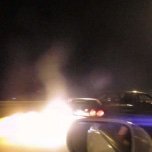Noisy Attessa
Announcements
-
Similar Content
-
Latest Posts
-
By rb finatic · Posted
I recently got myself a 1989 r32 GT-R and it has some slight smokiness from the exhaust and misfires sometimes when coming off the throttle. I'm looking for a good mechanic in the Brisbane region who will do a good job on it. It'll need a diagnosis, and most likely an engine rebuild with refurb/stock parts (not looking for a motorsport build... yet). If anyone has done something like this before/knows stuff about this in terms of who can do it and how much it cost, I'd like to hear about it. I was looking on the forum and I found some posts from 2020 that were similar to this, but it has been a while since then so if anyone has any updated info that would be great. I'm also new to the forum so if this topic should be in a different place please let me know. Thanks in advance! -
Stretching my memory now but about 10,000kms. After that I had a hissy fit. In went in a OS88 sequential then a PPG sequential. The extra gear is a game changer.
-
Oh. Did it last long before it broke? What trans did you end up with after that?
-
By Dose Pipe Sutututu · Posted
In other news, congrats @TurboTapin for winning the case. -
By TurboTapin · Posted
Even Phillips screws here are now mostly a hybrid that allow Robertson to also fit into it. They have accepted defeat haha. @GTSTBOY
-








Recommended Posts
Create an account or sign in to comment
You need to be a member in order to leave a comment
Create an account
Sign up for a new account in our community. It's easy!
Register a new accountSign in
Already have an account? Sign in here.
Sign In Now